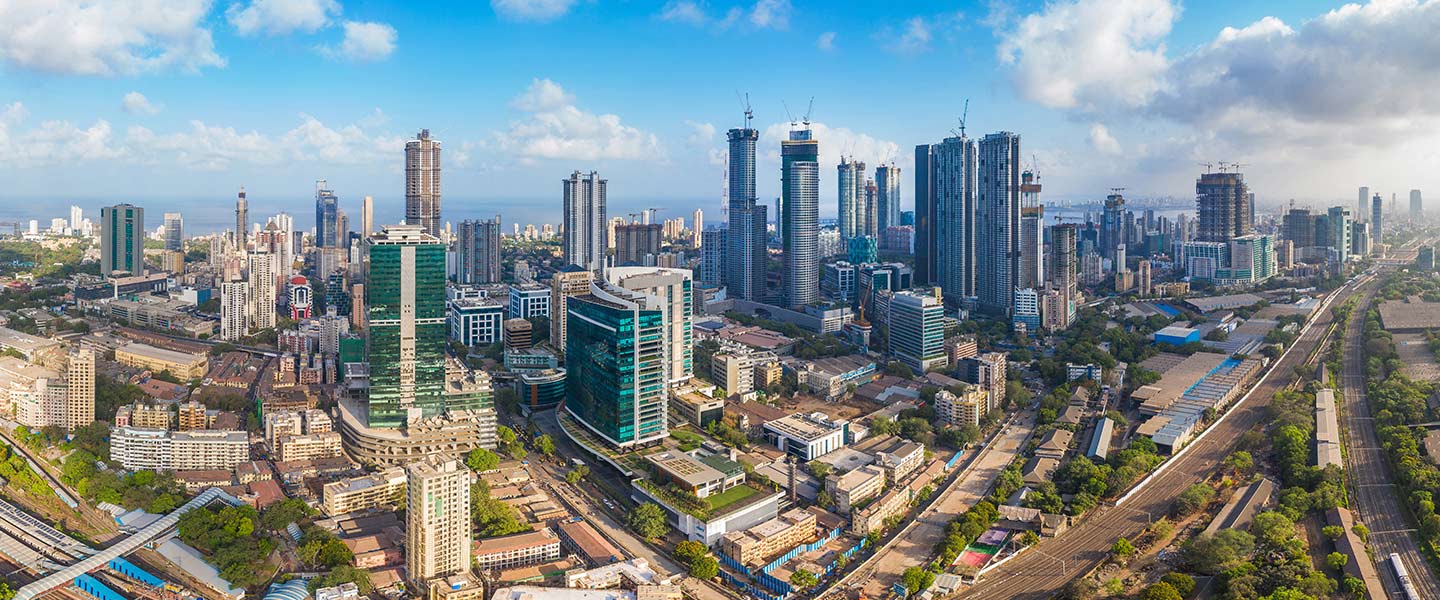-
Business Consulting
Our business consulting specialists offer a comprehensive blend of strategic advisory services. We assess the business, industry, operating model, synergy, skill sets and vision of the organisation and recommend the way forward
-
Digital Natives
Unlock growth with Grant Thornton Bharat's Digital Natives solutions. Customised support for tech-driven companies in healthcare, gaming, and more.
-
New and Emerging Tech
In a world where change is constant, staying ahead means staying adaptable. At Grant Thornton Bharat, we believe the future belongs to those who can evolve quickly, leveraging new and emerging technologies not just as trends, but as strategic levers for transformation.
-
Finance Transformation
Using a holistic approach, integrating digitalisation and digital transformation we help clients achieve transparency, control, governance, and faster decision making through real-time data within the business.
-
Human Capital Consulting
Our Human Capital Consulting team harnesses technology and industry expertise to assist in constructing adaptable organisations with transparency, fostering productive and value-driven workforces, and inspiring employees to engage meaningfully in their tasks.
-
Production Linked Incentive Scheme
Production-linked Incentive Scheme by the Indian government is aimed at boosting manufacturing. Grant Thornton Bharat offers varied services across sectors to help businesses avail of this scheme.
-
Public Sector Advisory
Our Public Sector Advisory team has focused streams, aligned with the core priorities of the Government of India. We are responsible for providing innovative and customized technical and managerial solutions.
-
Tech Advisory
We have amalgamated Digital Transformation, IT Advisory & Information Management and Analytics into a new offering, DigiTech.

-
Direct Tax services
Our tax specialists offer a comprehensive blend of tax services, tax litigation, regulatory and compliance services, helping you navigate through complex business matters.
-
Indirect Tax Services
Get tax services by leading tax firm Grant Thornton India. Our indirect tax services include consulting, compliance and litigation services for corporate, international and transaction tax
-
Transfer Pricing
Our transfer pricing services experts provide a range of services from provision of APA services to handling large global assignments including Country by Country reporting.
-
US Tax
At Grant Thornton, we help individuals and dynamic companies deal with US tax laws, which are one of the most complicated tax legislations across the world.
-
Financial Services - Tax
Best financial consulting services, tailored for small and large businesses by the experts having comprehensive knowledge of domestic laws and access to multifaceted tools to provide a valuable results.
-
Financial Reporting Advisory Services
Our experts have significant hands-on experience in providing IFRS/US GAAP services, end-to-end solutions and support services to fulfil financial reporting requirements.
-
Fund accounting and financial reporting
International operations often lack standardisation and have varied local reporting formats and requirements. Our experts can offer proactive insights, practical guidance, and positive progress and help meet regulatory timeframes.
-
Compliance and Secretarial Services
Our experts can assist in overhauling the entire compliance machinery of the organisation through evaluation of the applicable statutory obligations, monitoring of adequate governance controls, reporting and providing ongoing support.
-
Global People Solutions
As businesses transcend borders, both domestic and global considerations need equal attention. Our interim CFO and financial controller support services help organisations meet the business vision.
-
Finance and accounting outsourcing
Our accounting experts assist organisations in managing their accounting and reporting. Our dedicated Integrated Knowledge and Capability Centre (IKCC), allows us to service both the domestic and global markets efficiently and cost-effectively
-
Compliance Management System
We have automation solutions for you that will allow meeting government requirements and remain diligent, which when failed, can lead to penalties and loss in revenue.
-
Centres of Excellence
Strategic business hubs for global delivery
-
Global compliance and reporting solutions
At Grant Thornton Bharat, we meet the challenges of our clients and help them unlock their potential for growth. Our professionals offer solutions tailored to meet our clients’ global accounting and statutory reporting requirements. With first-hand experience of local reporting requirements in more than 145+ locations worldwide, we provide seamless and consistent international service delivery through a single point of contact.
-
Related-party transaction governance
Related-party transactions (RPTs) are common in business structures where organisations engage with their group entities, such as holding companies, subsidiaries, associate concerns, joint ventures, or key management personnel, for various operational or financial purposes.
-
Family Offices and Private Client Services
Grant Thornton Bharat Private Client Services offers tailored consulting for family-owned businesses, focusing on governance, compliance, tax, succession planning, and family office structuring to sustain wealth and preserve legacies across generations.
-
Labour codes
Labour codes solutions help you transition through the new legislation. At Grant Thornton, we help businesses divide their approach to make sure a smooth transition.
-
Alerts
At Grant Thornton India, with the help of our tax alerts, we help to provide updates on how to minimise your tax exposure and risks.
-
India investment roadmap
The India Investment Roadmap resource is designed to navigate the complexities of Indian tax and regulatory laws, providing seamless guidance and a comprehensive set of solutions to ensure a smooth process for investors aiming to establish or expand their presence in India.
-
CFO Solutions
Our comprehensive suite of solutions for CFOs

-
Crisis and Resilience
Cyber risks, financial crime and regulatory scrutiny demand strong preparedness. Our forensic team helps organisations build robust crisis and resilience frameworks to protect value and maintain trust.
-
Cyber
In today’s time, businesses have gone through large transformation initiatives such as adoption of digital technologies, transition to cloud, use of advanced technologies et al.
-
ESG consulting
Grant Thornton Bharat offers holistic ESG consulting solutions for sustainable business outcomes. With industry expertise and AI technology, we drive long-term value.
-
Risk analytics
Grant Thornton Bharat’s CLEARR Insights is a state-of-the art data analytics platform that will help you in seamless data analysis and efficient decision-making.
-
Forensic & Investigation Services
The team of forensic consulting services experts consists of the best intelligence corporate experts, and fraud risk, computer forensic experts to deliver most effective solutions to dynamic Indian businesses.
-
Risk Optimisation
Our Governance, Risk and Operations (GRO) services encompass Internal Audit, Enterprise Risk Management, Internal Financial Controls, IT advisory, Standard Operating Procedures and other services.

-
Deal Advisory
Unlike other M&A advisory firm in India, we offer deal advisory services and work exclusively with controlled and well-designed strategies to help businesses grow, expand and create value.
-
Due Diligence
Grant Thornton’s financial due diligence services are aimed at corporate looking for mergers and acquisitions, private equity firms evaluating investments and businesses/promoters considering sale/divestment.
-
Debt & Special Situations Solutions
Grant Thornton Bharat offers specialist debt and special situations consulting services, including restructuring, insolvency, and asset tracing solutions.
-
IPO Services
Grant Thornton Bharat’s IPO services ensure optimal scaling of organisations in the financial markets
-
Transaction Tax Services
Our transaction tax experts understand your business, anticipate your needs and come up with robust tax solutions that help you achieve business objectives ensuring compliance and efficiency
-
Overseas Listing
Overseas listing presents a perfect platform for mid-sized Indian companies with global ambitions. Grant Thornton’s team of experts in listings, work closely with clients during all stages.
-
Valuations
Valuation services are central to every deal lifecycle — from pre-deal strategy to post-transaction integration. Grant Thornton Bharat delivers precise, compliant, and defensible valuations across regulatory, financial reporting, and transaction contexts. Our experts apply deep technical and sector insights to ensure fair value, mitigate risk, and support decision-making for M&A, private equity, litigation, and intangible assets. Every deal begins with the right value — we help you discover it.
-
Financial Reporting Advisory Services
Grant Thornton Bharat Financial Reporting Advisory Services offer end-to-end solutions for complex financial requirements, including GAAP conversions, IPO support, and hedge accounting advisory, ensuring accurate financial reporting and compliance.
-
Financial Statement Audit and Attestation Services
Grant Thornton Bharat offers customised financial statement audit and attestation services, ensuring impeccable quality and compliance with global standards. Our partner-led approach, technical expertise, and market credibility ensure effective solutions for your business needs.

- Agriculture
- Asset management
- Automotive and EV
- Banking
- Education and ed-tech
- Energy & Renewables
- Engineering & industrial products
- Fintech
- FMCG & consumer goods
- Food processing
- Gaming
- Healthcare
- Urban infrastructure
- Insurance
- Media
- Medical devices
- Metals & Mining
- NBFC
- Pharma, bio tech & life sciences
- Real estate and REITs
- Retail & E-commerce
- Specialty chemicals
- Sports
- Technology
- Telecom
- Tourism & hospitality
-
 Thought leadership Co-lending in India: Expanding credit access for MSMEsIn today’s rapidly evolving financial landscape, co-lending has emerged as a key enabler of credit expansion in India, facilitating partnerships between banks and non-banking financial companies (NBFCs) to extend credit more efficiently to underserved segments.
Thought leadership Co-lending in India: Expanding credit access for MSMEsIn today’s rapidly evolving financial landscape, co-lending has emerged as a key enabler of credit expansion in India, facilitating partnerships between banks and non-banking financial companies (NBFCs) to extend credit more efficiently to underserved segments. -
 Article Why India’s financial inclusion journey needs to focus on equity and access to creditFinancial services have expanded over a decade, giving millions access to bank accounts and digital payments. But true empowerment needs to reach every corner of the country if growth is to be long-term and sustained
Article Why India’s financial inclusion journey needs to focus on equity and access to creditFinancial services have expanded over a decade, giving millions access to bank accounts and digital payments. But true empowerment needs to reach every corner of the country if growth is to be long-term and sustained -
 Thought Leadership Competitive and sustainable agriculture & food processing in KeralaThe economy of Kerala is primarily driven by the services sector, which contributes 66% to the Gross State Domestic Product (GSDP).
Thought Leadership Competitive and sustainable agriculture & food processing in KeralaThe economy of Kerala is primarily driven by the services sector, which contributes 66% to the Gross State Domestic Product (GSDP). -
 Article Economic Survey 2024-25: Deregulation, investment and innovation for a Viksit BharatIndia's economic growth remains for a steady trajectory with real GDP expected to grow at 6.4% in FY25 and in the range of 6.3%-6.8% in FY26, reflecting resilience despite global uncertainties.
Article Economic Survey 2024-25: Deregulation, investment and innovation for a Viksit BharatIndia's economic growth remains for a steady trajectory with real GDP expected to grow at 6.4% in FY25 and in the range of 6.3%-6.8% in FY26, reflecting resilience despite global uncertainties.
-
Quarterly Aviation Insights
Explore the latest trends in aviation industry with Grant Thornton Bharat’s Quarterly Aviation Insights. Stay updated on industry growth, market shifts & key developments.

-
Freight Forward: Quarterly insights
Logistics sector in India is adapting to rising costs, global disruptions, and the growing urgency of sustainability.
-
India-UK
India-UK
-
India - Japan
India - Japan

The existence and effectiveness of Special Economic Zones (SEZs) in India has become a topic of significant discussion as the country's economic landscape is undergoing transformation. Originally introduced in 2005 to accelerate industrialization, promote exports, create employment, enhance access to global market and attract foreign investment, SEZs have yielded mixed results across the nation.
SEZ performance & development
India's economic trajectory, alongside global trade dynamics and technological advancements, necessitate a critical reevaluation of efficacy of SEZs. Despite the existence of 2781 operational SEZs with investments exceeding INR 6,699 billion1 and employing over 2.98 million people1 under 5,713 SEZ units1, concerns have been raised regarding their competitiveness. While some have flourished, others have encountered hurdles such as bureaucratic formalities, infrastructure deficiencies, regulatory complexities, underutilization of land etc.
The presence of vast patches of vacant land within SEZs underscore the need for ecosystem development. Attracting anchor investors and incentivizing high-tech sectors are vitally important, which would serve as catalysts, stimulating demand and fostering growth in ancillary industries. While SEZs have policy on operating under a single window mechanism, reports indicate persistent inefficiencies, with manufacturers navigating through multiple departments for approvals. Issues like restrictive lease structures and cumbersome entry-exit processes hinder ease of business operation. Providing high-value services and amenities can enhance operational efficiency and improve the quality of life for workers, an aspect where Indian SEZs often fall short. Last-mile connectivity issues impede timely delivery and inflate logistics costs. Addressing these challenges can boost capacity utilization and probable output of SEZs. Ease of doing business, regulatory transparency, and administrative efficiency play critical role in attracting investment for SEZs. Streamlining bureaucratic processes and improving business environment can also strengthen the survival prospects of SEZs.
Indian Government has acknowledged the current issues and is working to create greater flexibility for SEZs. Same has been reflected by their recent announcement to overhaul India's SEZ law, which is expected to play a key role in streamlining practices and increasing operational efficiency in SEZs. A revamped policy framework as Development Enterprise and Services Hub (DESH) Bill 2022, aligned with economic needs and global trends, holds promise for bolstering India's economic competitiveness on the global stage. Driven by evolving dynamics, the decision has garnered support from industry stakeholders. In the interim, amendments in SEZ rules, including partial denotification of SEZ area, aim to inject new life into the sector. This move would unlock potential for IT/ITeS businesses and likely resolve underutilization of space in SEZs. Recently, SEZs have been included under Remission of Duties and Taxes on Exported Products (RoDTEP) scheme, which will further provide a competitive edge and level playing field to Engineering, Textiles, Chemicals, Pharmaceutical, Food Processing and several other sectors. To enable efficient RoDTEP disbursement, a phase wise implementation is in progress for integration of ICEGATE to SEZ Online portal.
It is imperative to note the exceptional growth of SEZs during their nearly two-decade existence in India, which has been enumerated below:
| Indicators | As of Feb' 2006 | Incremental | As of Dec' 2023 | Increment in % |
| Investment (INR - crores) | 4,035.51 | 6,65,944.49 | 6,69,980.002 | 16,502% |
| Employment(No. of employees) | 1,34,704 | 28,49,973 | 29,84,6773 | 2,116% |
(Value in INR crores)
| Year | Total India Exports4 | Export from SEZ5 | Contribution of SEZ (%) |
| 2014-15 | 18,96,348 | 4,63,770 | 24.46% |
| 2015-16 | 17,16,384 | 4,67,337 | 27.23% |
| 2016-17 | 18,49,434 | 5,23,637 | 28.31% |
| 2017-18 | 19,56,515 | 5,81,033 | 29.70% |
| 2018-19 | 23,07,726 | 7,01,179 | 30.38% |
| 2019-20 | 22,19,854 | 7,96,669 | 35.89% |
| 2020-21 | 21,59,043 | 7,59,524 | 35.18% |
| 2021-22 | 31,47,021 | 9,90,747 | 31.48% |
| 2022-23 | 36,21,550 | 12,63,578 | 34.89% |
Global scenario
It is to be noted that countries across Africa, from Egypt in the North to South Africa in the South, have been establishing SEZs to reap the benefits bestowed in the SEZ framework. Numerous SEZs around the world such as Shenzhen SEZ, Pomeranian SEZ, Coyol Free Zone, Sharjah's Hamriyah Free Zone Authority etc. have turned out to be a vehicle for global trade benefits.
Conclusion
Despite facing global headwinds, SEZ exports in India have exhibited resilience, particularly in sectors like IT, pharmaceuticals, and automotive, amounting to $157.38 billion6 in the fiscal year 2023-24, which is about 20.2 % of India's total exports. In conclusion, the future of SEZs in India depends on addressing these challenges and seizing opportunities for growth, which is under due consideration by the Government. Globally, SEZs have played a pivotal role in driving economic growth, and India seeks to align its policy with both domestic economic imperatives and global best practices. If the revamped policy adapts to new trends and addresses prevailing challenges, SEZs may be the key to reconfiguring global value chains.
Contributed by: Sakshi Pahwa (Manager) and Priyanka Dhamija (Consultant) at Grant Thornton Bharat
This article first appeared in Taxmann on 29 May 2024.

